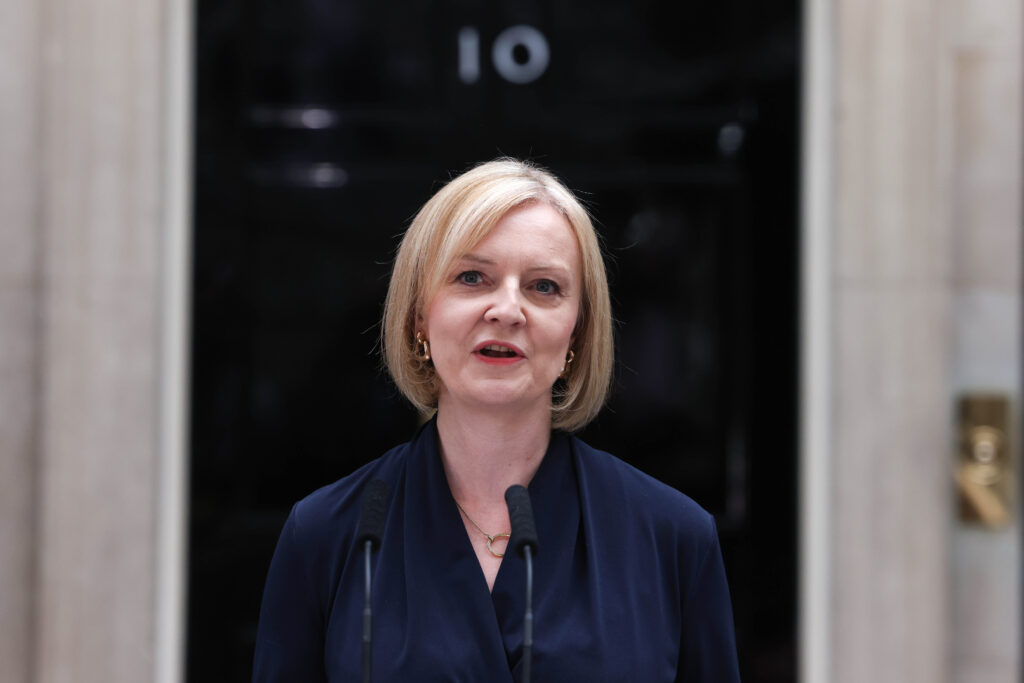Within the last four months, the United Kingdom has mourned the passing of Queen Elizabeth II and witnessed the resignation of two prime ministers. Just two nights before her death, Queen Elizabeth II fulfilled what would be her last monarchical duty by appointing Liz Truss to her post as prime minister of the United Kingdom.
Less than two months ago, Truss defeated Rishi Sunak with ease. She claimed leadership of the Tory Party, or the Conservative Party of the United Kingdom, and with it, the office of the prime minister of the United Kingdom. Representing not only a change to leadership for the Conservative Party but also a change for the United Kingdom, Liz Truss assumed the position on the heels of a rocky end to Boris Johnson’s time as Prime Minister and leader of the Conservative Party. Truss began her tenure in No. 10 Downing Street with hopes to turn the British economy around and set the United Kingdom on the right path with the country’s newly found independence from the European Union. Truss had set the tone early as prime minister. She neglected to appoint anyone to her cabinet who had not supported her in the election, leaving her selection extremely limited and giving many people a negative impression of how she intended to lead.
Within her first few days in office, Truss saw the pound fall to its lowest value since 1985 against the U.S. dollar and was tasked with reuniting the country after the death of Queen Elizabeth II. With early turmoil in her tenure, Truss seemed to remain focused on her long-term goals, unphased by short-term shortcomings. When Truss came into office, she focused on economic growth rather than deficit and debt. However, the latter is how her time in office will be remembered.
By the sixth week of Truss’ tenure, she had fired two of the most senior members of her cabinet. On Oct. 14, Truss fired Kwasi Kwarteng, her Chancellor of the Exchequer. Kwarteng had partnered with Truss when she announced her campaign to become Boris Johnson’s successor. Kwarteng and Truss agreed that the economic change they wanted to see would not come with tweaks to the policies of the Johnson administration, but that they needed “radical” change to set the U.K.’s economy back on the right track. The focus on “radical change” was accompanied by promises to stop the national rise in insurance rates and corporation tax. Truss also planned to lift environmental policies in favor of economic development. Environmental policies such as a ban on fracking which increased energy and gas bills were lifted to ease the cost of living in the United Kingdom.
Out of the gates, Kwarteng and Truss instituted a “mini-budget”. Many Tory supporters praised the budget for representing the party’s ideals. The budget included the largest tax cuts since 1972. It removed barriers to bankers’ bonuses and gave large tax cuts to the rich. Kwarteng’s “mini-budget” had the opposite effect on the economy of what was intended. Not too long after its inception, the “mini-budget” caused the worth of the sterling against the dollar to plummet, a huge fall in the gilt market, and future mortgage rates to face a rise of four figures.
Less than a week after the firing of Kwarteng came the second dismissal in Truss’ cabinet when she relieved Suella Braverman of her position as Home Secretary. She had to fire Braverman after a security breach in which she sent a government document to a member of Parliament via her personal email. Truss filled the positions of Kwarteng and Braverman with politicians who had supported Rishi Sunak in the election. On the same day she fired Braverman, Truss faced calls from numerous members of Parliament to resign. She defended herself exclaiming, “I’m a fighter and not a quitter.”
About a day after her remarks to Parliament, Liz Truss resigned. Her resignation comes at a time when the British pound is at its lowest value against the dollar ever, inflation rates are in double digits and the Bank of England is making unprecedented moves. Truss stated that she will hold office until her successor is chosen.
A successor for Truss will be chosen in a way similar to how she was elected to replace Boris Johnson, however, they only have a week to do it. Candidates will need 100 nominations from members of Parliament who are also members of the Conservative Party this time. In the election to replace Johnson, prospective candidates only needed 30 nominations from likewise M.P.s; 10 candidates met this requirement. This means that only three candidates will be able to vie for residence at 10 Downing Street.
One potential candidate to replace Truss is Rishi Sunak, the runner-up to Truss in the previous election and Chancellor of the Exchequer under Boris Johnson. The leader of the House of Commons, Penny Mordaunt, could also make a bid for prime minister. Mordaunt was previously Defense Secretary and made a run in the election that sent Truss to 10 Downing Street and ultimately landed Mordaunt in third. Ben Wallace, a veteran, and a top choice to replace Johnson, could represent a welcome change for the Conservative Party. He had opposed Brexit, the move made by Johnson to leave the E.U., and acted as an impetus for the tanking economy. Lastly, several analysts have mentioned Boris Johnson as a possible candidate. Although, the prospect of Johnson being elected or even running seems far-fetched. His lack of action during his time in office is blamed by many as the start of the downfall that has driven the United Kingdom to this point.
The United Kingdom’s election process severely limits who will have a say in this election as it did when Liz Truss was elected. If multiple candidates receive the required 100 nominations, then the selection will be determined by a member vote. In this scenario, the eligible voters will be the dues-paying members of the U.K.’s Conservative Party; those same voters dictated the elections leading to the overall election of Liz Truss. The Conservative members tend to be a group that is more white, richer and older than the rest of the population. These members also tend to be more ideologically right-wing than what would be representative of the population.
While it will be hard for Boris Johnson to win 100 Conservative members of Parliament’s votes, early polls indicate that he would be the favorite among voting members if he received the nominations.
Regardless of who receives the required number of nominations, the fact is that if multiple candidates meet the threshold, the same group of people will decide the predecessor for the person they elected less than two months ago. Assuming Tory voter registration has not changed drastically since the last election, there are about 172,000 eligible Tory voters according to the Conservative Party, just 0.3% of the U.K.’s total electorate. In the previous election, out of the already small pool, only 142,000 cast a vote to decide who would lead the United Kingdom. The small percentage of eligible Tory voters means that the choice for the next Prime Minister will most likely not be representative of the eligible voting population as a whole.







